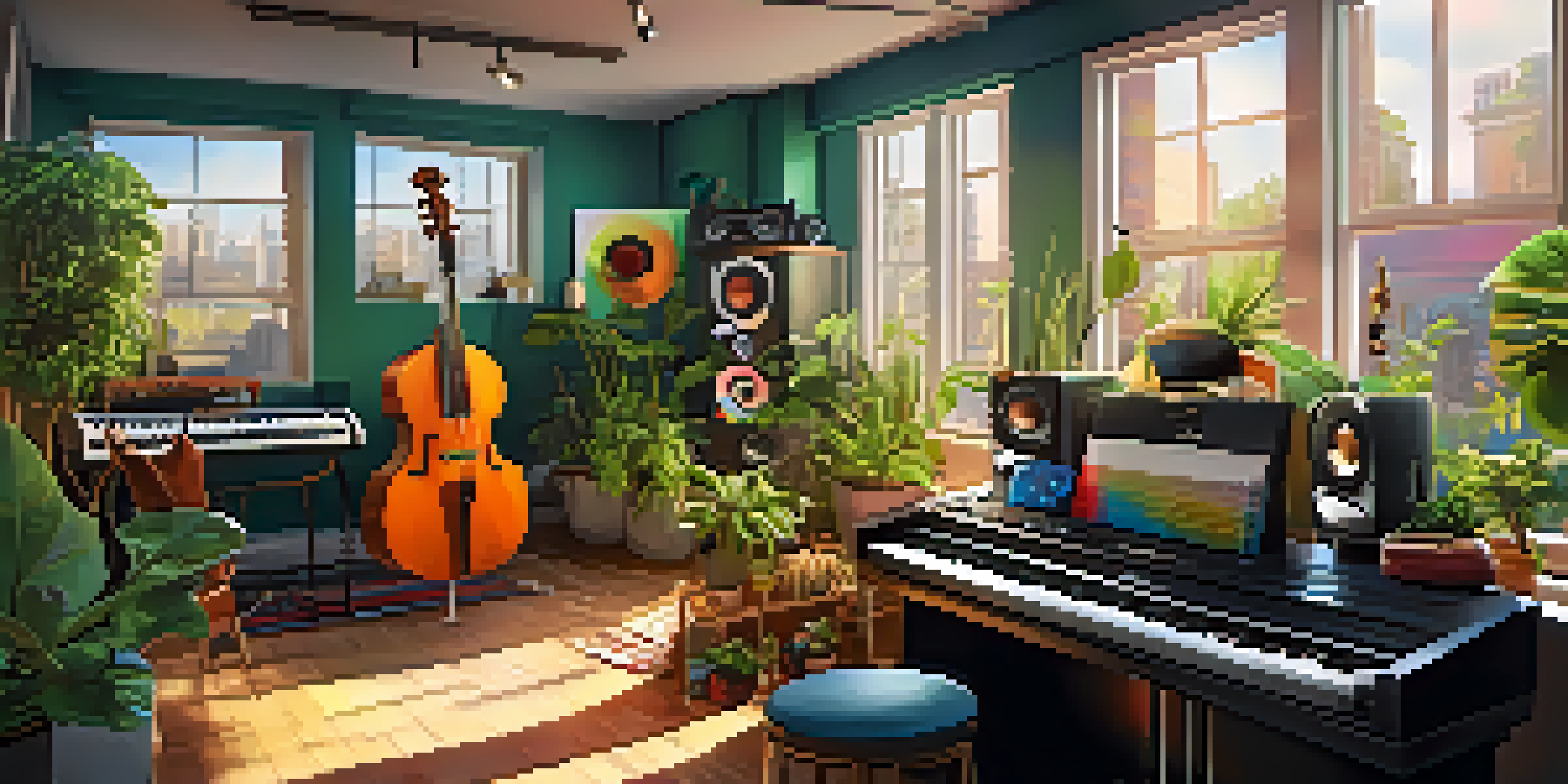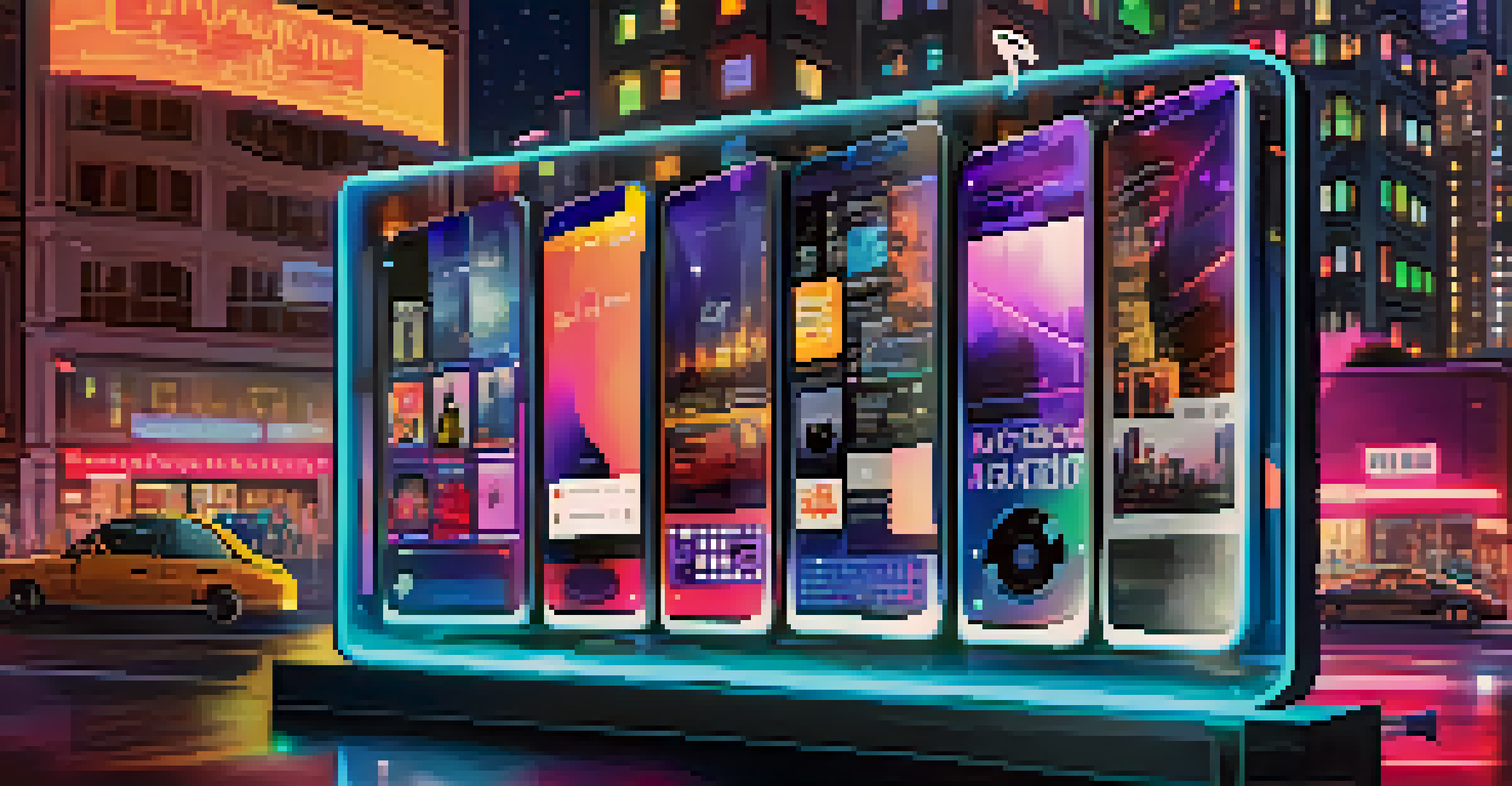The Shift from Albums to Singles in Digital Music Era

Understanding the Digital Music Landscape
The digital era has revolutionized how we consume music, making it more accessible than ever. With just a few clicks, we can stream our favorite tracks from anywhere in the world. This shift in accessibility has naturally influenced how artists release their music, leaning more toward singles rather than the traditional album format.
Music is the shorthand of emotion.
Streaming services like Spotify and Apple Music have changed the game, allowing listeners to create personalized playlists filled with their favorite singles. This flexibility means that listeners can enjoy a variety of songs without committing to an entire album. As a result, singles have gained prominence, often leading the charts while full albums take a back seat.
Moreover, the ease of sharing and discovering music online has encouraged artists to release singles more frequently. This keeps their audience engaged and allows them to experiment with different styles without the pressure of a full album's success. In many ways, the digital landscape has paved the way for singles to shine.
The Decline of the Traditional Album Format
With the rise of streaming, the traditional album format is seeing a decline. Many listeners no longer feel the need to sit down and listen to a full album from start to finish. Instead, they prefer to pick and choose their favorite tracks, leading to a fragmented listening experience that favors singles.

This change poses a challenge for artists who once poured their creativity into crafting a cohesive album. Albums used to tell a story or convey a particular theme, but in the singles-driven market, that narrative can get lost. As artists adapt, some are left wondering how to maintain their artistic integrity while appealing to a more single-focused audience.
Singles Dominate Music Consumption
The rise of streaming services has led to a preference for singles over traditional albums, resulting in a fragmented listening experience.
Interestingly, while albums may be declining in popularity, they still hold significant value for certain artists and fans. Some listeners appreciate the depth and creativity that an album can offer, which means there's still a niche market for those who cherish the complete musical journey.
The Impact of Social Media on Music Consumption
Social media platforms have fundamentally changed how we discover and share music. Platforms like TikTok and Instagram allow users to promote individual songs through short clips, often making a single go viral overnight. This phenomenon has shifted the focus from full albums to standout tracks that can capture attention quickly.
The great thing about music is that it can be a part of your life without being the center of your life.
As users create content around specific singles, artists have realized that they can leverage these platforms to increase their reach. A catchy hook from a single can become the soundtrack for countless videos, driving streams and chart performance. This rapid dissemination of singles is a far cry from the slower buildup that albums once enjoyed.
Ultimately, social media's influence has turned singles into the stars of the show, often overshadowing the deeper, more immersive experience that albums can provide. With trends changing at lightning speed, artists must adapt to this new reality, prioritizing singles to stay relevant in the fast-paced digital landscape.
The Role of Streaming Services in Shaping Trends
Streaming services play a crucial role in the shift from albums to singles. These platforms often prioritize playlists over full albums, making it easier for listeners to discover new tracks without committing to an entire album. Artists are now encouraged to focus on releasing singles that can be featured in popular playlists, increasing their visibility.
These playlists are curated based on algorithms that analyze listening habits, ensuring that the best and most popular singles get maximum exposure. As a result, many artists are rethinking their release strategies, often choosing to drop singles more frequently to keep up with the demand for fresh content.
Social Media Fuels Single Popularity
Platforms like TikTok and Instagram have transformed how music is promoted, allowing singles to go viral and overshadow albums.
While this model benefits listeners who crave variety, it can create pressure for artists to constantly produce new material. This can lead to a re-evaluation of what it means to create music in today's landscape, where quantity often seems to take precedence over quality.
Consumer Preferences and the Rise of the Single
Consumer preferences have shifted dramatically in recent years, with many listeners favoring the convenience of singles over full albums. The ability to quickly access and enjoy their favorite tracks has become a priority for today's music fans. This trend is evident in the way people create playlists featuring a mix of various artists and genres, rather than a single cohesive album.
Additionally, the rise of the mobile listening experience means that many people are consuming music on-the-go. In such a fast-paced environment, singles provide the perfect solution for those who want to enjoy music without investing too much time. This preference has encouraged artists to focus on crafting catchy, memorable singles that can stand on their own.
As listeners continue to embrace this single-focused approach, artists must adapt to meet their audience's needs. This shift has sparked a new era in music where the art of songwriting is often condensed into shorter, more impactful tracks.
Artists' Strategies in the Age of Singles
In the singles-driven music landscape, artists are developing new strategies to capture and retain listener attention. Many are opting to release singles more frequently, sometimes even teasing upcoming tracks through social media. This tactic builds anticipation and keeps fans engaged, making them eager for each new release.
Another effective strategy involves collaboration with other artists, which can help expand an artist's reach and introduce their music to new audiences. By teaming up for singles, artists can leverage each other's fan bases, creating a win-win situation that can boost their streaming numbers significantly.
Artists Adapt to New Trends
In response to the singles-driven landscape, artists are frequently releasing new tracks and collaborating to maintain listener engagement.
Finally, some artists are using their singles as a stepping stone to promote upcoming albums or projects. By releasing a series of singles leading up to an album launch, they can maintain momentum and generate buzz, ensuring that when the album finally drops, it has a built-in audience ready to listen.
The Future of Music: Will Albums Make a Comeback?
As we look to the future, one might wonder whether albums will ever make a comeback. While the current trend favors singles, there's still a strong contingent of music lovers who appreciate the artistry and storytelling found in full albums. These listeners often seek out albums that resonate with them on a deeper level, suggesting that the demand for albums may never completely disappear.
Moreover, artists who prioritize their creative vision may still choose to release albums despite the trend toward singles. For them, an album serves as an important expression of their artistic identity. As the industry continues to evolve, it's likely that a balance will emerge, allowing both singles and albums to coexist.

Ultimately, the future of music consumption is uncertain, but the passion for music as an art form will remain. Whether through singles or albums, artists will continue to find ways to connect with audiences and share their stories, adapting to the ever-changing landscape of the digital music era.